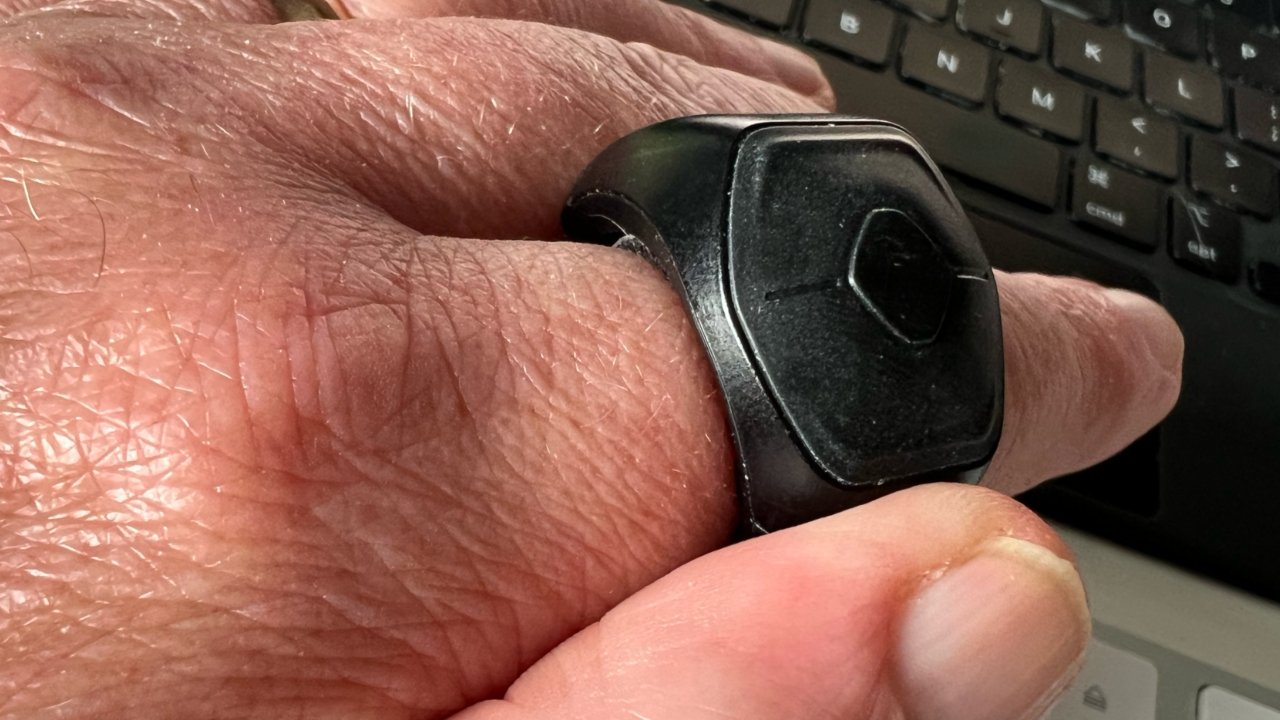Apple is continuing to research fine details of just how smart an Apple Ring could be, and what use could be made of one for Apple AR.
Similar to Genki's Wave for Work, an Apple ring would have multiple controls
Apple certainly loves AR, and it will keep trying to put a ring on it. Previously, amongst its many patent applications, Apple filed two particular ones that were effectively both concerning smart rings and how they could be made.
One of those, "Computer systems with finger devices," has now been granted — and so has a very finely different one. "Deployment systems for computer system finger devices," is about the practicalities of how such a ring could work, and could be made.
Apple notes in the first of these two granted patents, that it's fine for regular computers to be "controlled using computer mice and other input accessories." Whereas with AR and VR environments, things are a bit harder.
"In virtual reality systems, force-feedback gloves can be used to control virtual objects," says the patent. "Devices such as these may not be convenient for a user, may be cumbersome or uncomfortable, or may provide inadequate feedback."
Consequently, the patent's 20 credited inventors propose a "finger device housing," which could include sensors "force sensors, ultrasonic sensors, inertial measurement units, optical sensors, and other components."
"As the user is viewing virtual content... the finger devices may be used in gathering finger input," it continues. So ultimately if there's an AR virtual keyboard in front of a user and they make typing movements with their ring finger, the system could presume they wanted to type — and extrapolate at least some of the motion
Apple's examples are more basic, though.
"For example, a virtual object corresponding to a movable control can be moved by a user based on finger input gathered using a finger device or a displayed menu option can be selected," says the patent. "In some arrangements, a user may interact with real-world objects while computer-generated content is overlaid over some or all of the objects."
"Rotation of a real-world object and other interactions with a real-world object," it continues, "and the virtual content overlaid on the real-world object may be used as input for controlling the operation of a mixed reality system or other electronic equipment."
Whereas in the second granted patent, "Deployment systems for computer system finger devices," Apple assumes there is such a thing as a smart ring. It then looks at how the ring would communicate with an AR or other system.
"The sensor circuitry may include a strain gauge, accelerometer, and/or other sensor circuitry to detect finger input as the housing is moved by the finger," it says. "Wireless communications circuitry may be used to supply the finger input to other devices in the system such as a head-mounted device."
Apple is looking in to how we would use smart rings, and even what we would do when we were not using them. And also how we could charge the rings.
"The finger device housing may have hinge structures that allow portions of the housing to fold with respect to each other," it continues. "Magnets or other bistability structures may be used to provide the folding housing with folding bistability."
"A base may be used to store the finger device," says the patent. "The base may have wireless power circuitry to wirelessly charge the finger device."
Apple is really describing a kind of AirPods-like charging case for a smart ring, but in this second granted patent, it goes further. It goes into how a user would put such a ring on.
"In some configurations, the base may have deployment structures that help place the finger device on the user's finger for use and that help remove the finger device for storage," it says. "Finger device support structures may form a stand-alone dock, may form an enclosure, may form part of a wearable electronic device, and/or may form other base structures."
Apple does file hundreds of patent applications every year, and it gets a great many granted, too. It can't be assumed that any particular one will definitely lead to a product.
Yet Apple is not just examining this smart ring conceptually - and many times recently - it's now figuring out the accessories, too.
 William Gallagher
William Gallagher










 Marko Zivkovic
Marko Zivkovic

 Malcolm Owen
Malcolm Owen

 Amber Neely
Amber Neely

 Wesley Hilliard
Wesley Hilliard










There are no Comments Here, Yet
Be "First!" to Reply on Our Forums ->